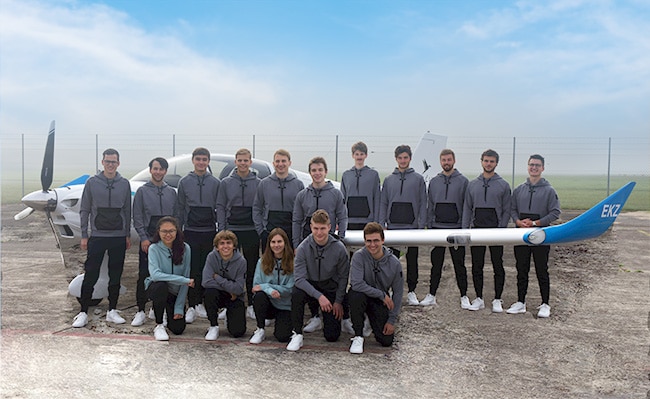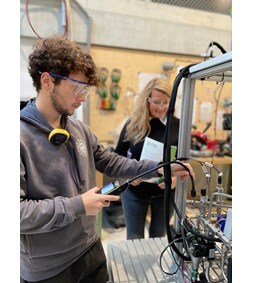Aviation of tomorrow
The aviation of tomorrow
Alternatives for emission-free air traffic have been in the works for some time. Already very successful projects have been implemented by a focus project of ETH Zurich with CELLSIUS.
The vision of CELLSIUS is to be able to operate aircraft climate-neutrally, efficiently and sustainably in the future. The project team consists of committed students who are taking part in a focus project in the last year of their bachelor's degree. The project enables them to prove themselves in practical engineering work. Cellsius is self-financed and implemented in close cooperation with industrial partners. Swagelok Switzerland is proud to support the 2022/23 H2 project with products, services and our expertise.
Team Cellsius H2 2023
Success Story
In 2020, CELLSIUS started its first major project with the e-Sling, a four-seater battery-powered aircraft, which successfully took to the skies in 2022. Now follows the follow-up project H2. As the name suggests, the focus here is on the development of a hydrogen drive for a Swiss Lightwing AC4. Since hydrogen has a significantly higher energy density than batteries (which were installed in the e-Sling), it can also fly further. Due to the hybrid drive train (hydrogen and batteries), the flight duration will increase significantly in contrast to the e-Sling. The goal is the actual travel time of +2 hours and covering a distance of more than 250 km without CO2 emissions.
The current project team, consisting of 16 ETH students, is currently researching an alternative hydrogen powertrain that will power a small aircraft in the future.
The powertrain consists of many different components that can transport an aircraft into the air.
In order to realize this, CELLSIUS develops the majority of the components itself according to your requirements; from the development and design of the fuel cell system to the development of a high-performance inverter. In addition, students also have the opportunity to master any challenges with the support team or freelancers.
Save test environment
Swagelok supports the team with its many years of expertise in the field of hydrogen. Our valves, ball valves and pressure regulators are mainly installed in the test stand, which is housed in a mobile ship container. We invited the person responsible for setting up the test stand to a Swagelok safety seminar to ensure the correct assembly of our products.
Hydrogen "sniffer" - Cellsius doing a H2 leak test
Especially with the smallest medium, hydrogen, absolute leak-tightness is a must in order to keep the people in the environment safe.
In order to prevent any material embrittlement caused by hydrogen, a higher concentration of chromium and nickel in the components helps. Swagelok has set the minimum amount of chromium for its stainless steel 316 components at 17 percent, and that of nickel at 12 percent.
Thus, our specifications are above the minimum concentration of these elements set by the ASTM (American Society for Testing and Materials). The material composition of the stainless steel 316 used also helps to prevent hydrogen embrittlement.
Here is an overview of the products in use:
Pressure regulators (K-Serie)
Pressure gauge (PGI)
Ball valves (Serie 40)
Check Valves (Serie C)
Full metal hoses (Serie FJ)
Safety valves (Serie PRV)
various pipes and fittings, as well as hand tube benders.
We will regularly report on the progress of the project on this page and our Linkedin profile and wish the ETH Zurich team every success in the realization of the Cellsius project H2.


